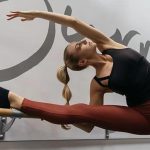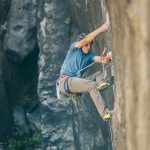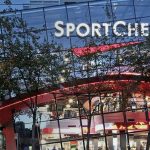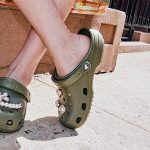Higher merchandising margins, partly due to increased performance product, as well as on inventory and expense controls fed a surge in Shoe Carnival’s Q2 earnings. Although overall store traffic continued to decline, comps in athletics increased for the second quarter in a row.
On a conference call, Mark Lemond, president and CEO, said the comp decline reflects high-single-digit declines in comp traffic during June and early July. Although the economic stimulus package boosted traffic in mid-July to nearly breakeven, “the consumer once again retreated to a very conservative shopping pattern in the last two weeks of July.”
Average unit retails were up, as well as average transaction, while conversion was flat. By department, the comp decline came primarily in women’s non-athletic, where the lack of fashion drivers contributed to a “continuing lackluster season.” Men’s non-athletic comps were flat, while children’s and adult athletics saw low-single digit increases.
“These increases have been driven by performance product, which is continuing to play a larger part of our overall athletic business,” said Cliff Sifford, EVP and GMM, on the call. “This category has been instrumental in helping us to achieve higher average unit retails in all athletic categories.”
Outside of performance, gains were driven by Converse Chucks, Girl’s Low Profile, and Boy’s Skate.
The GM increase reflects a 90 basis point improvement in merchandising margins. Besides more performance product, the improvement reflects a 7% decline in inventories on a store-by-store basis. All departments improved margins with the exception of women’s dress and casual, where prices were flat with last year. Occupancy costs increased 30 basis points.
Regarding BTS, Shoe Carnival noted that it is halfway through the seven-week season and sales are currently running down 0.7% on a comp basis. Customers are buying “very close to need,” and delaying purchases to just around or after the actual BTS date. He added, “We have also seen the customer look for value; whether it’s tax-free incentives or coupons, she is definitely value-conscious.”
On the bright side, athletics has continued to see strength during BTS, driven by Chucks, Nike, and most traditional performance athletic brands, including Asics and Saucony. Children’s has continued “very strong,” especially in athletics, as Skate, Girl’s Low Profile, and Running are all ahead of plan. The strength in athletic has been driven primarily by higher average unit retails, reflecting both increasing costs coming out of China and a strategy to buy more performance product and performance brands. Although Sifford said it’s too early to make the call on women’s non-athletic, casual boots and booties are ahead of last year. In men’s non-athletic, boat shoes and hand-sewns are seeing gains.
Going forward, SCVL plans to bring inventory down in excess of $10 million by year-end in order to generate cash flow and protect gross margins.
“We are continuing our efforts to reduce the overall SKU count within the stores inventory in order to provide greater depth in size runs for our customers, and yet maintain lower, cleaner inventories,” said Lemond.
Another key focus will be on raising pricing, although Lemond noted that this initiative “depends largely upon the promotional cadence of our competitors in the footwear marketplace. We place great emphasis on increasing market share, not losing it.”














